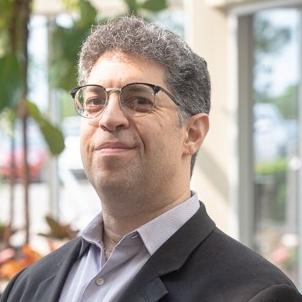
When I mentioned to colleagues and friends recently that I have been thinking about the idea of romance in medicine,some were confused. They thought the topic of romance seemed a little outside the realm of healthcare. They wondered if I was talking about things like Romeo and Juliet, and Humphrey Bogart and Ingrid Bergman in Casablanca?
Not quite. I have been thinking more about history and the ideas that have inspired great accomplishments in medicine.
The Romantic Medicine movement of the late 1700s to mid-1800s is just one manifestation of this idea. The movement was part of the larger Romanticism movement, where writers became interested in the great promise of science and medicine for deepening our understanding of what it means to be human. The vision was to achieve a more enlightened approach to medicine by uniting material natural science and subjective clinical practice.
But romance in medicine is much more than that. More broadly, with the word romance, I am referring to the passion, awe and wonder that has blossomed at various times in history.Romance is reflected in the deep wonder and optimism with which healthcare’s great visionaries explored the mysteries that lay beyond the limits of human understanding in their times. (See the sidebar below.)
Lessons for today
Amid the challenges of the pandemic, we should take time to reflect on the profound developments we have witnessed as diverse peoples, organizations and even industries have come together collaboratively, surpassing anything we have ever seen. The need for a response has given rise to what I would suggest is a new romantic spirit of unity and possibility, allowing for astonishing innovations.
Just consider how much has occurred in the past year in healthcare due to out-of-the-box thinking and passion fueled by necessity:
- Major establishments, such as the auto industry, have retooled their efforts to make personal protective equipment for healthcare.a
- Whiskey manufacturers have produced hand sanitizers.b
- Laboratories have pooled efforts to create and streamline testing for diagnosing COVID-19.c
Such things would have seemed improbable just two years ago.
How to foster the romantic spirit
Here are some ways healthcare finance leaders can nurture and sustain the romantic spirit that has made such developments possible.
Promote interplay of free thought. Healthcare organizations can foster such creativity by sponsoring symposiums that address lessons learned from the COVID-19 experience regarding the future direction for hospital needs.
Provide seminars on the history of medicine that shaped today’s financial realities. Bring in an inspirational speaker. Although such an initiative might seem out of touch with today’s practical concerns, significant value could be gleaned from instilling healthcare professionals with wonder at the profound human accomplishments on which today’s healthcare benefits are founded — framed in the context of today’s economic truths. Fostering understanding of the what drove healthcare’s great discoveries can inspire new thinking about today’s issues.
Create consortia with other entities to promote unique visions of the future. Such approaches, with players who are unaccustomed to collaborating with each other, can create an amalgam of innovation greater than the sum of its parts.d
A new flowering of medical romance
We can only hope that COVID-19 will eventually recede. For now, we should reflect on the many disparate entities that came together as never before to quickly address the pandemic’s impact. This is modern-day romanticism in medicine at its best. The passion and zeal behind these efforts should inspire our ingenuity, awe and romance and lead us to improve humanity in mind, body and spirit in unimagined ways.
Footnotes
a. Valdes-Dapena, P., “Automakers are still cranking out masks and other PPE as Covid roars back,” CNN Business, Dec. 8, 2020.
b. Distilled Spirits Council of the United States, “Distilleries making hand sanitizer to fight COVID-19,” Page accessed July 9, 2021.
c. Boyle, P., “Coronavirus testing: How academic medical labs are stepping up to fill a void,” AAMC, March 12, 2020.
d. “12 innovations that will change health care and medicine in the 2020s,” TIME, Oct. 25, 2019.
4 who exemplified romance in medicine
The history that gave rise to recent tectonic shifts in modern medicine is populated by visionaries from both the distant and more recent past. Here are just four who exemplify the romantic ideals that have inspired so many in their pursuit of understanding healthcare’s greatest mysteries:
- The Roman architect Marcus Vitruvius Pollio (Vitruvius, c. 80-70 BC to c.15 BC), who applied his knowledge of principles of architecture to understanding the human anatomy
- Leonardo da Vinci (1452-1519), whose drawings of human anatomy were inspired by Vitruvius
- Werner Forssmann (1904-1979), whose work paved the way for cardiac catherization
- Wallace Coulter (1913-1998), whose Coulter Principle helped revolutionize science and medicine
Many of healthcare’s greatest visionaries had obstacles to overcome, while some enjoyed a rare level of support in their efforts or brought unique perspectives to bear. And in each case, these efforts were founded on what I would suggest are romantic ideals.
Da Vinci, for example, resided in Florence under the protective influence of the Medici family, which fostered ingenuity and creativity. And Coulter adapted his understanding and application of of colloidal homogeneity required for painting Navy ships to characterization of blood cells, which is a staple of the hematology discipline.





